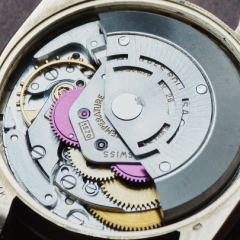Service, Repair & Adjustment Techniques (Not Timing or Regulation)
Discussing subjects relating to servicing, making adjustments and repairs to watch parts and movements and fitting balance staffs. This section is not for timing or regulation discussion. To discuss Regulation or Timing please go here.
384 topics in this forum
-
- 46 replies
- 3.2k views
-
- 7 replies
- 560 views
-
- 0 replies
- 280 views
-
- 3 replies
- 310 views
-
- 7 replies
- 436 views
-
- 106 replies
- 5.3k views
-
- 8 replies
- 676 views
-
- 24 replies
- 1.4k views
-
- 7 replies
- 840 views
-
- 3 replies
- 502 views
-
- 17 replies
- 1.3k views
-
- 20 replies
- 2k views
-
- 7 replies
- 446 views
-
- 14 replies
- 844 views
-
- 0 replies
- 221 views
-
- 5 replies
- 704 views
-
- 18 replies
- 1.3k views
-
- 17 replies
- 1.2k views
-
- 4 replies
- 530 views
-
- 4 replies
- 540 views
-
- 39 replies
- 2.1k views
-
- 1 reply
- 365 views
-
- 40 replies
- 2.7k views
-
- 14 replies
- 1k views
-
- 1 reply
- 356 views









.thumb.png.f90dbf035d35248cb483d466310379d3.png)







.thumb.jpg.cb17a66989f1e796fd4217db2e9ca9df.jpg)